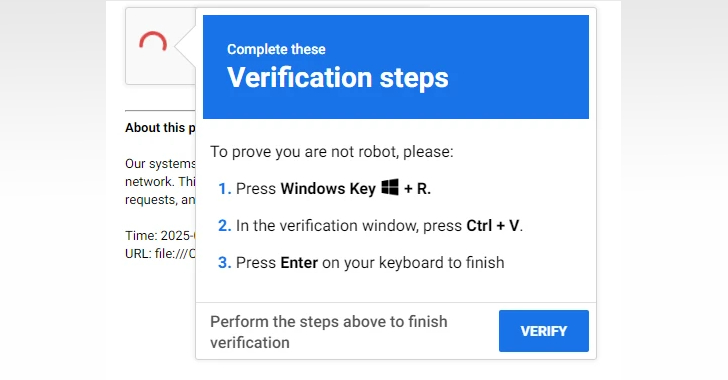
Standardized Protection: Decoding the Power of CIS-Based Risk Assessments
In an era where cybersecurity threats loom larger than ever, organizations worldwide are continually seeking robust solutions to protect their digital assets and sensitive data. One such solution gaining increasing attention is the implementation of CIS-based risk assessments. In this article, we will delve into the world of cybersecurity, unpacking the concept of CIS-based risk assessments, understanding their importance, and exploring how they can fortify your organization’s defenses against evolving cyber threats.
The CIS Framework: A Foundation for Security
Before diving into the intricacies of CIS-based risk assessments, let’s first grasp the significance of the Center for Internet Security (CIS) framework. The CIS is a nonprofit organization renowned for its role in providing cybersecurity solutions, best practices, and standards that help organizations safeguard their information systems.
The CIS Controls, also known as the Critical Security Controls, represent a set of prioritized actions designed to mitigate the most common cyber threats. These controls serve as a valuable blueprint for organizations seeking to bolster their cybersecurity posture. They encompass a wide range of measures, including asset inventory and control, continuous vulnerability assessment, and data protection. By following these controls, organizations can significantly reduce their susceptibility to cyberattacks.
What Are CIS-Based Risk Assessments?
CIS-based risk assessments are a structured approach to evaluating an organization’s cybersecurity posture using the CIS Controls as a framework. This assessment method involves a thorough examination of an organization’s security measures and processes to identify vulnerabilities and potential risks. By aligning their practices with the CIS Controls, organizations can systematically address security gaps and enhance their overall security posture.
Why CIS-Based Risk Assessments Matter
The importance of CIS-based risk assessments cannot be overstated in the current cybersecurity landscape. Here’s why they matter:
- Proactive Risk Identification: CIS-based assessments enable organizations to proactively identify vulnerabilities and risks before cybercriminals exploit them. This proactive approach helps prevent security breaches and data breaches.
- Prioritization of Security Measures: The CIS Controls provide a prioritized list of security measures, allowing organizations to focus their efforts and resources on the most critical areas. This ensures that limited resources are allocated to the most pressing security concerns.
- Customized Security Solutions: CIS-based assessments can be tailored to suit an organization’s specific needs and risk profile. This customization ensures that security measures are aligned with the organization’s unique challenges and objectives.
- Compliance and Regulation: Many industries and regulatory bodies require organizations to adhere to specific cybersecurity standards. CIS-based risk assessments help organizations meet these compliance requirements by providing a framework for security best practices.
- Continuous Improvement: Cyber threats are constantly evolving. CIS-based assessments encourage a culture of continuous improvement by regularly reviewing and updating security measures to adapt to new threats and vulnerabilities.
The Steps of a CIS-Based Risk Assessment
To decode the power of CIS-based risk assessments, it’s essential to understand the steps involved:
- Asset Identification: The first step is to identify all assets within the organization, including hardware, software, and data. This comprehensive inventory forms the foundation for assessing security risks.
- Asset Management: Once assets are identified, they need to be managed effectively. This involves tracking changes, updates, and decommissioning of assets to maintain an accurate inventory.
- Vulnerability Assessment: Organizations must conduct regular vulnerability assessments to identify weaknesses in their systems. Automated tools and manual assessments are used to pinpoint vulnerabilities.
- Prioritization of Controls: Based on the vulnerability assessment, organizations prioritize the CIS Controls that are most relevant to their specific situation and allocate resources accordingly.
- Implementation: Implementing the selected CIS Controls involves configuring security measures, deploying new tools, and revising policies and procedures to enhance security.
- Monitoring and Maintenance: Continuous monitoring is crucial to detect and respond to security incidents promptly. Regular maintenance ensures that security measures remain effective.
- Incident Response: Preparing for potential security incidents is a vital part of CIS-based assessments. Organizations should have a well-defined incident response plan in place.
- Feedback Loop: The assessment process is cyclical. Feedback and lessons learned from previous assessments should inform future security improvements.
Real-World Impact
Let’s examine a real-world scenario to understand the tangible benefits of CIS-based risk assessments. Consider a financial institution that undergoes a CIS-based assessment. The assessment reveals several vulnerabilities, including outdated software, weak access controls, and inadequate employee training.
By following the CIS Controls framework, the institution takes immediate action to address these issues. They update their software, implement strong access controls, and provide comprehensive training to employees. As a result:
- Reduced Vulnerability: Vulnerabilities that could have been exploited by cybercriminals are eliminated, significantly reducing the risk of a breach.
- Enhanced Reputation: Customers and stakeholders gain confidence in the institution’s commitment to security, bolstering its reputation.
- Regulatory Compliance: The institution now complies with industry-specific cybersecurity regulations, avoiding potential fines and penalties.
- Cost Savings: While there is an initial investment in implementing security measures, the institution saves money in the long run by preventing costly data breaches.
- Adaptability: The institution’s cybersecurity posture is now more adaptable, ready to respond to new threats as they emerge.
Conclusion: Empowering Organizations to Defend Against Cyber Threats
In a world where cybersecurity threats are constantly evolving, organizations must take a proactive approach to protect their digital assets and sensitive data. CIS-based risk assessments offer a structured and effective means of achieving this goal. By leveraging the CIS Controls framework, organizations can identify vulnerabilities, prioritize security measures, and continually improve their cybersecurity posture.
As cyber threats continue to grow in sophistication and frequency, embracing standardized protection through CIS-based risk assessments is not merely a choice but a necessity. It empowers organizations to decode the power of proactive cybersecurity, fortifying their defenses against the ever-present and ever-evolving threats in the digital age.
Contact Cyber Defense Advisors to learn more about our CIS-Based Risk Assessment solutions.





